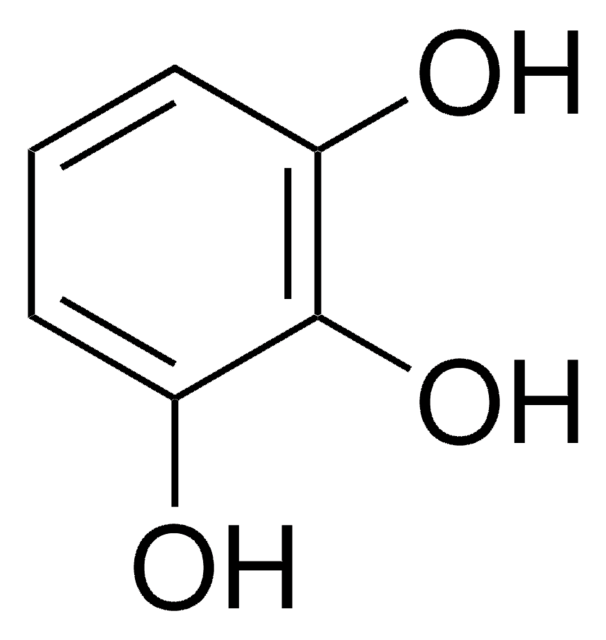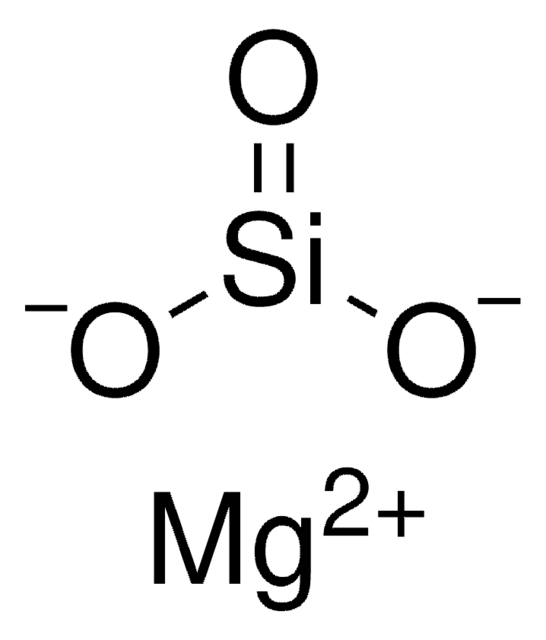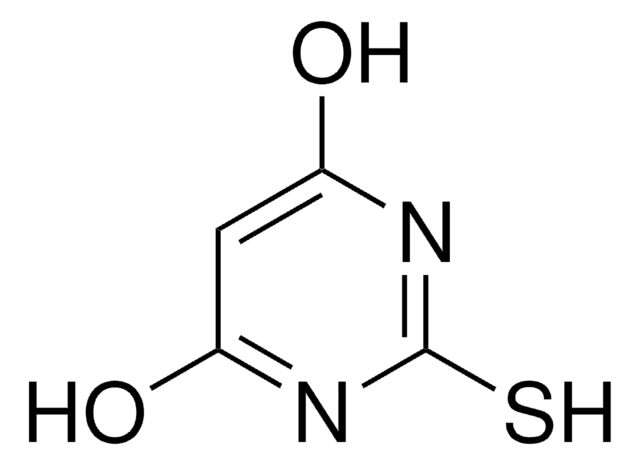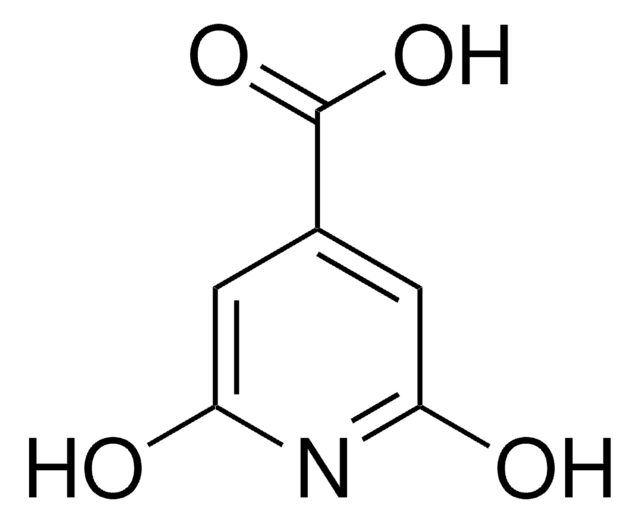16040
Pyrogallol
ACS reagent, ≥99%
Sinonimo/i:
1,2,3-Trihydroxybenzene, 2,3-Dihydroxyphenol, Pyrogallic acid
About This Item
Prodotti consigliati
Grado
ACS reagent
Densità del vapore
4.4 (vs air)
Tensione di vapore
10 mmHg ( 167.7 °C)
Saggio
≥99%
Stato
solid
tecniche
HPLC: suitable
Residuo alla calcinazione
≤0.005% (as SO4)
P. ebollizione
309 °C (lit.)
Punto di fusione
131.0-135.0 °C
133-134 °C (lit.)
Solubilità
water: soluble
Anioni in tracce
chloride (Cl-): ≤10 mg/kg
sulfate (SO42-): ≤50 mg/kg
Cationi in tracce
Fe: ≤0.001%
heavy metals (as Pb): ≤0.0005%
applicazioni
pharmaceutical (small molecule)
Stringa SMILE
Oc1cccc(O)c1O
InChI
1S/C6H6O3/c7-4-2-1-3-5(8)6(4)9/h1-3,7-9H
WQGWDDDVZFFDIG-UHFFFAOYSA-N
Cerchi prodotti simili? Visita Guida al confronto tra prodotti
Categorie correlate
Applicazioni
Azioni biochim/fisiol
Avvertenze
Warning
Indicazioni di pericolo
Classi di pericolo
Acute Tox. 4 Dermal - Acute Tox. 4 Inhalation - Acute Tox. 4 Oral - Aquatic Chronic 3 - Muta. 2
Codice della classe di stoccaggio
11 - Combustible Solids
Classe di pericolosità dell'acqua (WGK)
WGK 2
Punto d’infiammabilità (°F)
Not applicable
Punto d’infiammabilità (°C)
Not applicable
Dispositivi di protezione individuale
dust mask type N95 (US), Eyeshields, Faceshields, Gloves, type P3 (EN 143) respirator cartridges
Scegli una delle versioni più recenti:
Possiedi già questo prodotto?
I documenti relativi ai prodotti acquistati recentemente sono disponibili nell’Archivio dei documenti.
I clienti hanno visto anche
Il team dei nostri ricercatori vanta grande esperienza in tutte le aree della ricerca quali Life Science, scienza dei materiali, sintesi chimica, cromatografia, discipline analitiche, ecc..
Contatta l'Assistenza Tecnica.











